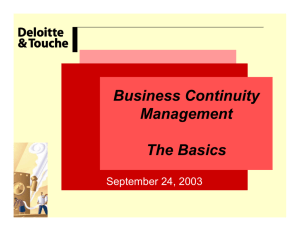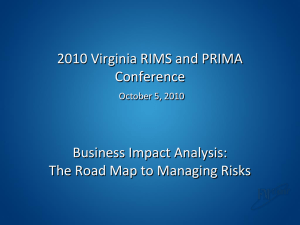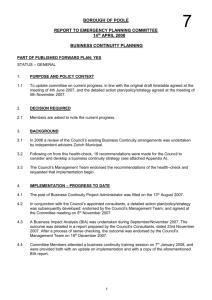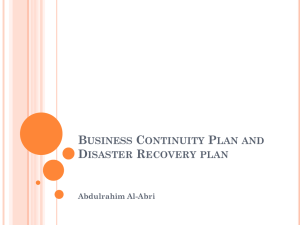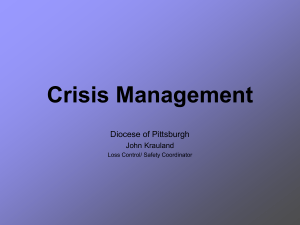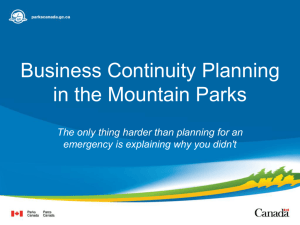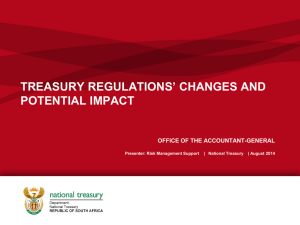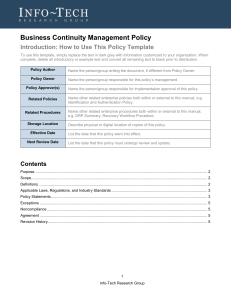Business Continuity Management for SMEs Dr. L. Marinos, ENISA
advertisement
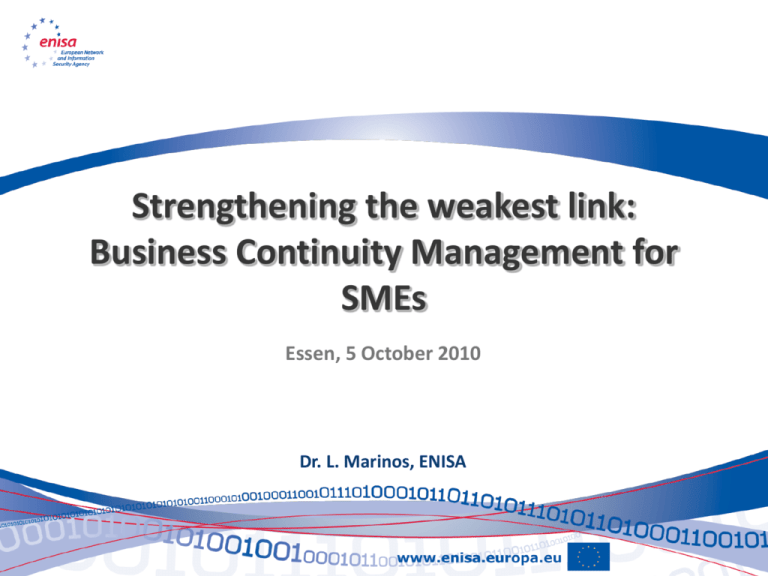
Strengthening the weakest link: Business Continuity Management for SMEs Essen, 5 October 2010 Dr. L. Marinos, ENISA SME working assumption • SMEs are generated out of entrepreneurship and have low level of resources for “non-productive” investments • Most of SMUs (esp. owners) have low level of BC knowledge • SMEs are not in the position to fully develop BCP • Even in case that there is some IT-knowledge, availability is usually not part of it • SMEs tend to use standard components (soft- and hardware) What is Business Continuity? • Business Continuity is the ability to continue the business in an (for the customer) acceptable. • For SMEs needs to be: • Low cost • Simple • Practical • Affordable on the long term Business Continuity (Full version) Interface to other operational and product processes Conduct Business Impact Analysis Adapted Risk Management Activities Define BCM Framework Initiate BCM Programme Design BCM Approach Assess Risks and Impacts Determine Recov. Options Analyze Results Agree Recovery Strategy Prioritize Recovery Define Critical Resource Requirements Design BCP Identify the Organisation Incident Response Plan Incident Management Plan Assign BCM and Incident Responsibilities Define BCM Policy Deliver BCP Business Recovery Plan Test BCP Recovery Support Plan Determine Type of Test Write Test Plan Conduct Test Recurrence Short term IT Service Continuity Plan Deliver Debrief/Test Report Business Resumption Plan Long term Middle term Communications and Media Plan Sustain BCM Programme Train Staff Maintain and Review BCP Develop Awareness Problems with BC (..as other sec issues) • • • • • • • • • Too complicated Not business oriented Too focused on technical assets Too much concentration on threats Too reliant on estimates of “probability” Threat and vulnerability assessments too technical Unrealistic targets No clear action plan TOO SLOW! Source: Jeremy Ward Business Continuity „Light“ • Low expertise in the area of BC • Simply structured • Balance between simplicity and effectiveness • Understandable relations between used terminology • Good basis for knowledge transfer ENISA-Approach Phase 1 Phase 2 Select Risk Profile Critical Assets Identification Phase 3 Controls Selection Phase 4 Implementation and Management Controls Implementation Plan Business Continuity Plan Org. Control Cards Org. Control Cards Org. Control Cards Organizational Continuity Controls Asset Control Asset Control Cards Cards Asset Based Continuity Controls http://www.enisa.europa.eu/act/rm/risk-management-for-smes-and-micro-enterprises In Conclusion • We see tendencies for simpler approaches • Become business oriented (no technical, threat etc.) • Promote through professional associations • Develop corresponding certification schemes • Promote generation of a relevant “market” Thank you for your attention louis.marinos@enisa.europa.eu ENISA Risk Management Web Pages: www.enisa.europa.eu/rmra
